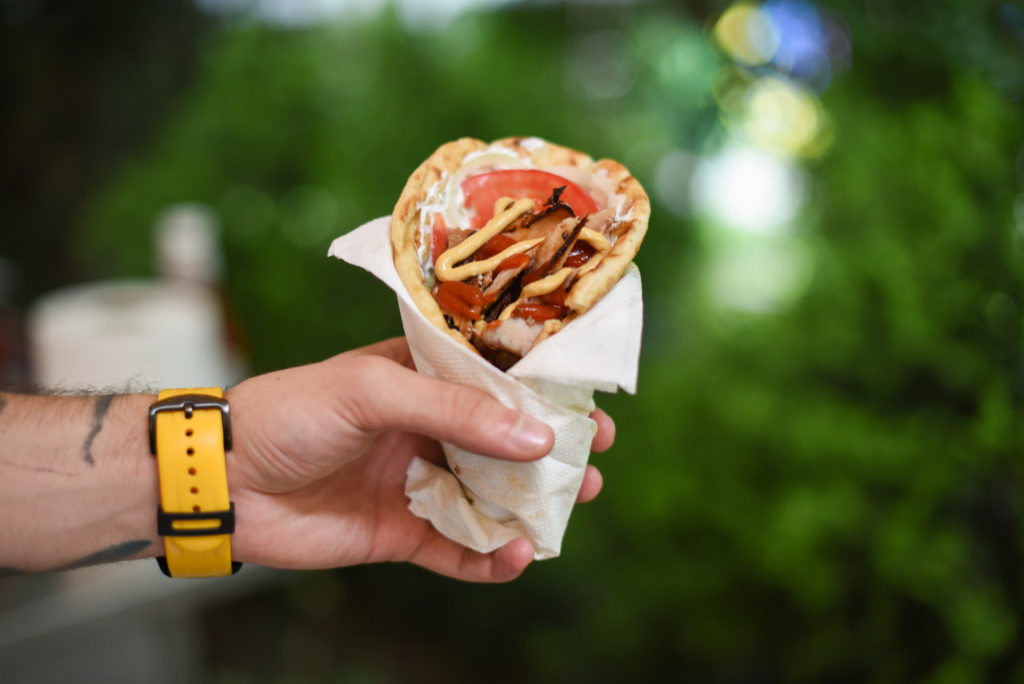July 24th is the day we celebrate that eating at drive-thrus is a very fun, if not entirely healthy American tradition. The first drive-thru opened in the 1930s, when Americans were really starting to fall in love with their automobiles and the freewheeling lifestyle. We still love to drive and eat on the go, but are there any ways we can make a drive-thru meal a bit healthier? Read on for simple ways to combine convenience and nutrition to keep you feeling good all road trip long.

Kill the Combo
Oh fries, with your golden delicious empty calories, how we love you. With the pushing of combo meal deals at almost every major drive-thru, you practically have to argue with them not to get the fries (and giant soda) and often have to pay more to get the main item sans fries. This can upset the budget part of our brains, causing us to order the combo just to feel like we’re getting the best deal. But eating an extra 400-800 calories when you are mostly sitting in the car all day isn’t an amazing deal for your body.
So skip the fries or split them with your road buddy if you want a happy medium. Bring fruit salad in a container instead if you want the healthiest road warrior of the year award. Skipping or splitting the soda part of combo meals is also a good idea. Most chains are happy to refill your water bottle, which will keep you hydrated and save you from filling up on empty calories.
Size matters
Many of the healthier options at major drive-thru restaurants are simply smaller versions of the main events. For example, a fully grown Whopper has over 600 calories, while a Whopper Junior has only about 300. Skip the cheese and load that baby Whopper up with all the veggies and you have a fairly well-balanced lunch. Same goes for McDonalds, where a double quarter pounder with cheese packs 780 calories, but a single cheeseburger only 300. Most fast food chains will now serve their sandwiches with lettuce wraps instead of buns, which is a great way to save empty carb calories—and probably make a really big mess in your car.
Be aware of health halos
Chicken sandwiches are usually thought of as healthier alternatives to burgers, but often they have even more calories and fat than their beefier counterparts. This is because in order to enhance flavor, the chicken is often deep fried or doused in super fattening sauces. Carl’s Jr’s Charbroiled Santa Fe Chicken Sandwich sounds like a reasonable healthy option—at least it’s not fried right? But with its special sauce and cheese it gets up to 550 calories and 27 grams of fat. The charbroiled BBQ chicken sandwich is a way better choice with only 390 calories and just 7 grams of fat. If you’re going to order chicken, make sure it’s grilled and have them leave off the sauce if you’re trying to reduce calories.
Many chains such as Burger King and Carl’s Jr. are now offering vegetarian burger options that sound way healthier than traditional beef burgers. While these veggies burgers are definitely easier on the planet, they are highly processed and still fairly high in calories and fat content. In fact, the “Impossible Whopper” has about the same amount of fat and calories as the original Whopper.
Convenience versus nutrition: the smack down
Unless you have a passenger who is willing to feed you like a baby bird, the healthiest drive-thru options are going to require pulling over for a few minutes of masticating. Taco Bell’s Power Bowls are designed to be high in protein, which will promote fullness and hopefully keep you out of the gas station minimart later on. Make them even lighter by ordering extra lettuce, no rice and “fresca style” which means no creamy sauces and fresh salsa instead. McDonald’s Southwest grilled chicken salad is another high-protein, low-calorie option that requires several minutes of intentional forking and chewing. For a happy medium, try Wendy’s grilled chicken wrap which is basically a grilled chicken salad in a handy, dandy wrap that you can eat while driving 75 miles an hour and singing “Bohemian Rhapsody” at the top of your lungs.